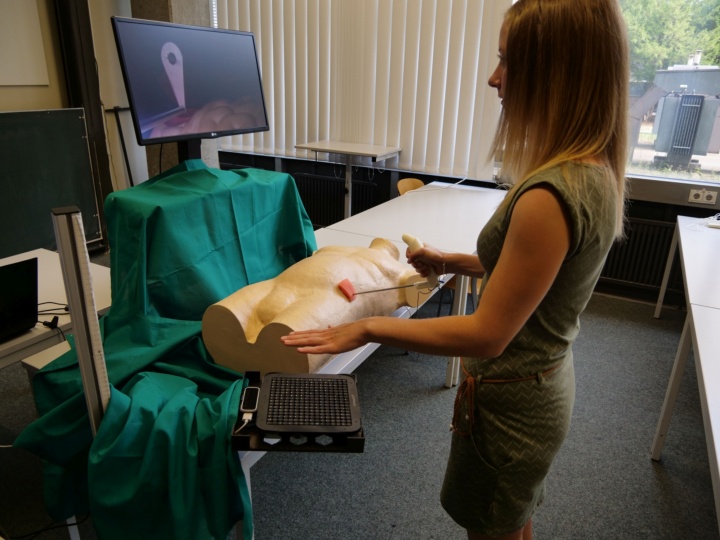Whether in the car, at a manufacturing machine, or in the operating room: More and more frequently, operating elements are controlled without contact, for example by means of eye movement, hand gestures, or voice control. The new communication technologies are intuitive, allow additional degrees of freedom in the interaction between humans and machines, and have great potential for the development of innovative products. So far, however, users have received feedback on the controls in the form of indications on displays or acoustic signals. This can be confusing and annoying, and the user doesn't know whether the system has executed the instruction correctly.
In a new project at the Institute for Engineering Design and Industrial Design at the University of Stuttgart, researchers from the team of Prof. Dr. Thomas Maier and Peter Schmid now want to optimize the information transfer between humans and machines. In particular, they take into account the age of the users as well as their sensorimotor and cognitive performance during hand gesture control. The researchers rely on ultrasonic waves that are projected onto the palm of the hand - for example, in the form of circles, triangles, or moving dots - where they cause tingling sensations. Once the user has learned the language of these signals, the sensation helps them move the hand with the right speed in the right direction. “We want the ultrasound-based feedback to be user-centered, so that the audiovisual perception channel, especially in elderly people, will be relieved by supporting tactile information transfer when interacting with contactless human-machine interfaces,” Peter Schmid explains. “The aim is to compensate for the cognitive and sensorimotor losses that occur in old age with regard to tactile perception.”
As a result, context-dependent design guidelines for ultrasound-based feedback in space are derived. The focus is on determining specific tactile feedback properties in gesture control, depending on the user’s age as well as their sensorimotor and cognitive performance.
The project “Ultrasound-Based Tactile Feedback Design of Contactless Human-Machine Interfaces Taking Into Account the Age of the User” (project number 500499494) is funded by the German Research Foundation (DFG) with about EUR 355 000 for a period of 36 months. The project started in October 2022.
| Contact | Prof. Thomas Maier, Peter Schmid, University of Stuttgart, Institute for Engineering Design and Industrial Design, Department of Industrial Design |
|---|



